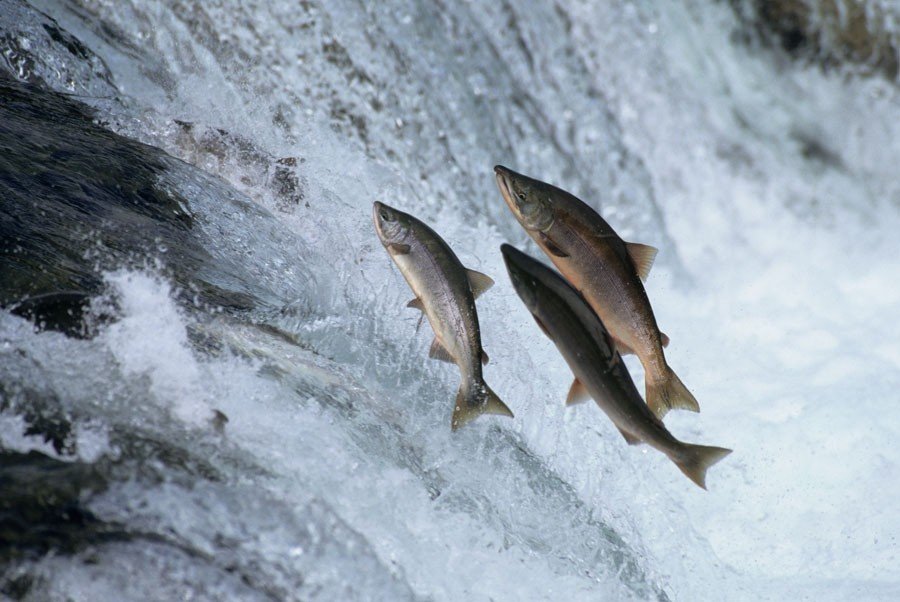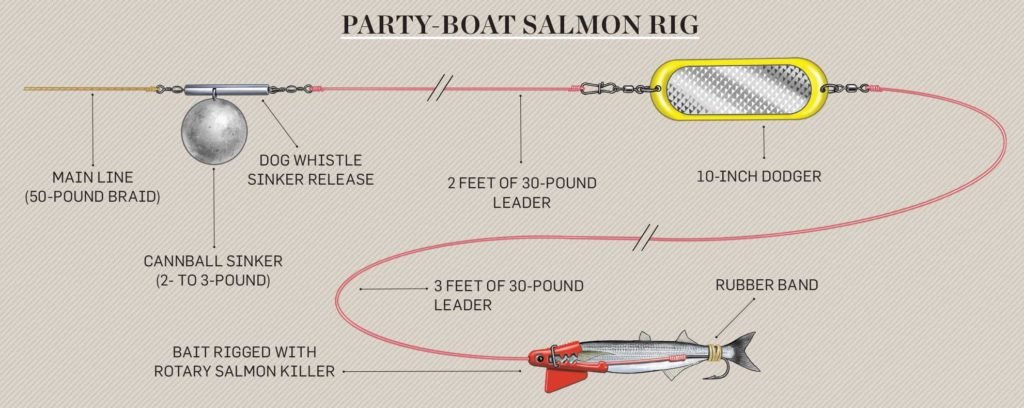Predicting salmon behaviour seasonally is crucial for anglers aiming to maximize their fishing success. By understanding how salmon respond to environmental cues throughout the year, you can strategically plan your fishing trips and increase your chances of a fruitful catch. Here’s a comprehensive guide to help you anticipate salmon movements and behaviours across different seasons.
Spring: Spawning Preparation and Migration
During spring, salmon begin their journey from the ocean back to freshwater rivers and streams for spawning. This migration is driven by instinct and triggered by changing daylight hours and water temperature. Anglers can anticipate salmon moving upstream in preparation for spawning, focusing their efforts near river mouths and shallow waters where fish gather before venturing further inland.

How to Predict Salmon Behavior Seasonally
Summer: Spawning and Feeding Patterns
In summer, salmon are actively spawning in freshwater rivers and streams. Female salmon dig nests (redds) in gravel beds, where they deposit their eggs, while males compete for spawning rights. Anglers should target deeper pools and fast-flowing currents where salmon congregate, using techniques that mimic natural prey to entice bites. It’s also important to consider local regulations regarding catch limits and spawning protection zones to ensure sustainable fishing practices.
Fall: Feeding Frenzy and Migration
Fall brings cooler temperatures and abundant food sources, triggering a feeding frenzy among salmon preparing for their return journey to the ocean. Anglers can capitalize on this by targeting salmon in deeper pools and near river mouths where they gather to feed on insects, small fish, and crustaceans. Using brightly coloured lures or flies that mimic migrating prey can attract salmon during this active feeding period.
Winter: Conservation and Resting Period
In winter, salmon enter a conservation phase, conserving energy in deeper, slower-moving waters. They may also seek out protected areas such as deep pools and undercuts in riverbanks to avoid strong currents and colder temperatures. Anglers should adjust their fishing techniques accordingly, using slower presentations and focusing on areas where salmon gather to rest and conserve energy.
Understanding Environmental Factors
Throughout the year, environmental factors such as water temperature, river flow, and food availability play significant roles in salmon behaviour. Warmer water temperatures in spring and summer accelerate spawning and feeding activities, while cooler temperatures in fall and winter prompt migration and conservation behaviours. Monitoring local weather forecasts and river conditions can provide valuable insights into when and where salmon are most likely to be active.
Conservation and Ethical Considerations
As stewards of salmon fisheries, anglers play a vital role in conservation efforts. Practising catch and release where required, respecting spawning areas, and adhering to fishing regulations help preserve salmon populations for future generations. By understanding and respecting salmon behaviour seasonally, anglers contribute to sustainable fishing practices and ensure the long-term health of salmon habitats.
Conclusion
Predicting salmon behaviour seasonally enhances an angler’s ability to plan effectively and adapt to changing fishing conditions throughout the year. By recognizing the natural rhythms of salmon migration, spawning, feeding, and conservation, anglers can optimize their fishing strategies and experiences. Whether you’re casting your line in spring, summer, fall, or winter, understanding when and where salmon are most active ensures that every fishing trip is rewarding and memorable.



